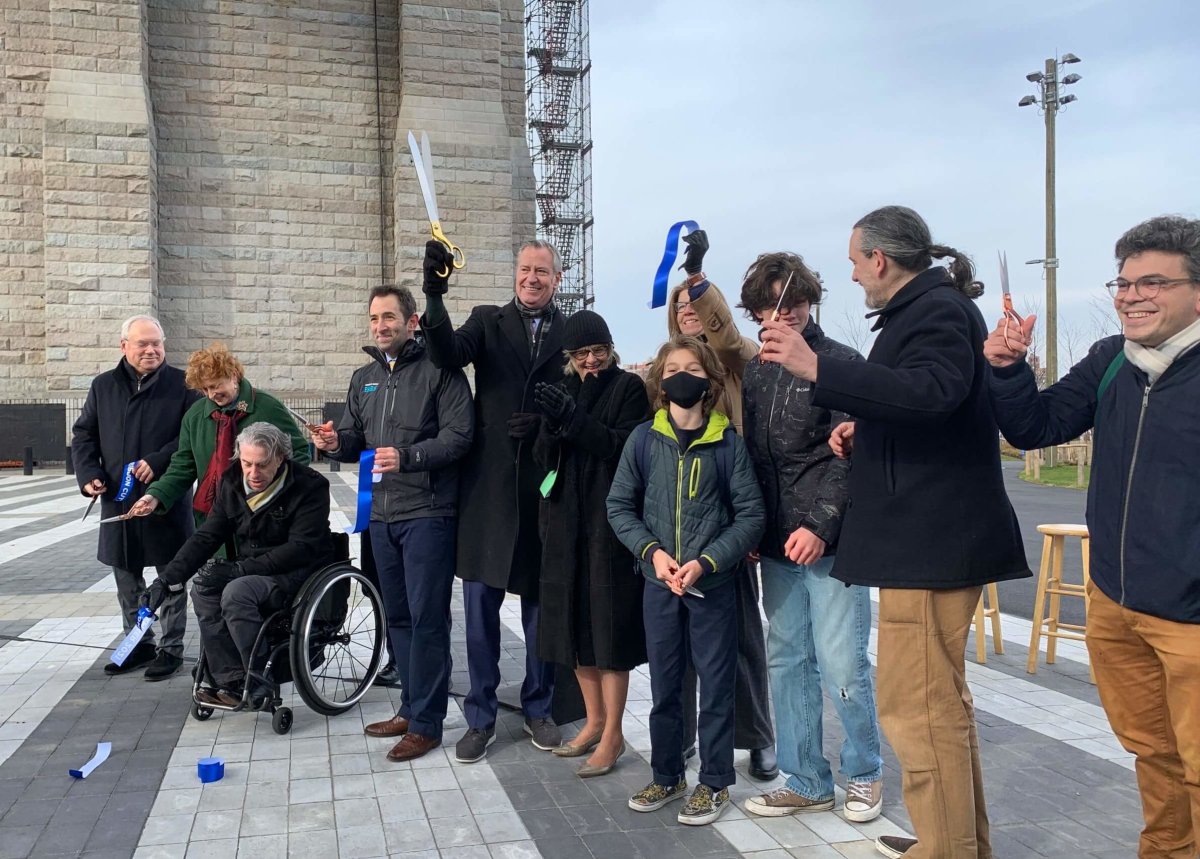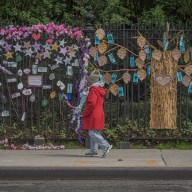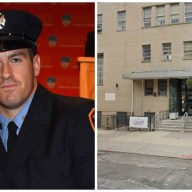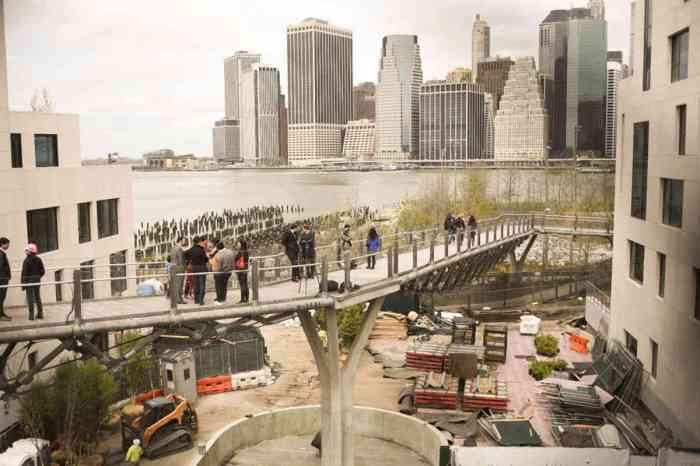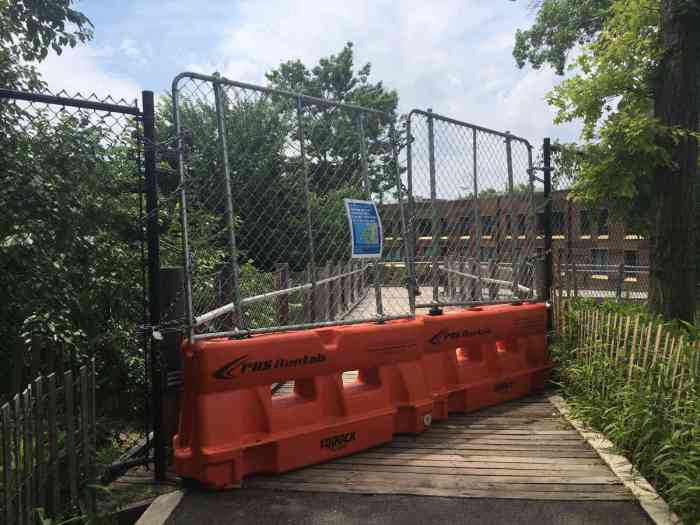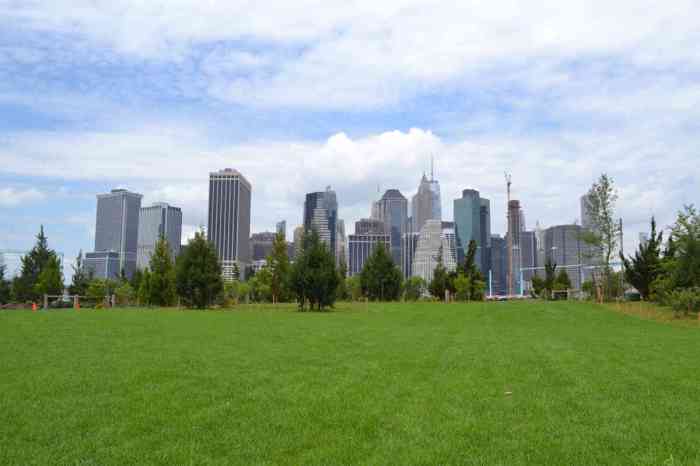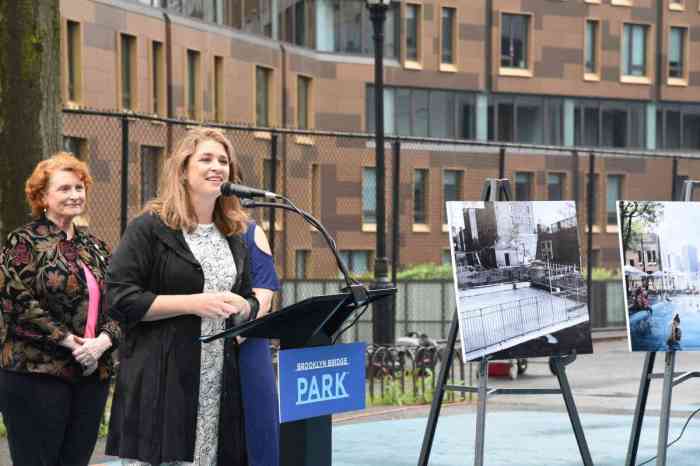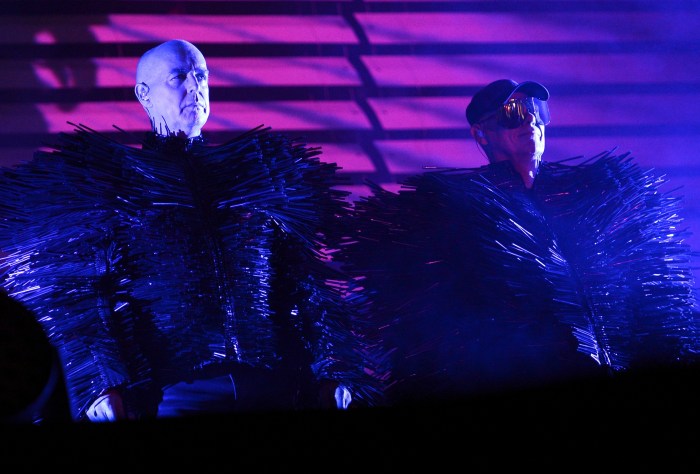The last section of Brooklyn Bridge Park officially opened on Thursday as officials cut the ribbon on Emily Warren Roebling Plaza, just beneath the Brooklyn Bridge.
“This opening marks the completion of Brooklyn Bridge Park as originally designed,” said Eric Landau, president of the Brooklyn Bridge Park Corporation. “As you probably know, we broke ground on the first section of the park in 2008, opening it in 2010. Since then, we’ve been working toward the complete transformation of a former industrial waterfront into one of New York City’s most beloved public parks.”
The $8 million, two-acre plaza connects the Dumbo portion of the park, including Jane’s Carousel, to the park’s piers, and brings new green spaces, benches, and a wide asphalt-and-paver plaza to the formerly fenced-off construction site.
“One of the things that the Brooklyn Bridge Park has really shown us is you can get things done on time, on budget, and many times, even faster than on time,” said Vicki Been, deputy mayor of housing and economic development. “It has been just an incredible honor to work with so many people who have come together to make this park a reality, and to really showing what this financing model and this model of partnership can do.”
The city’s Landmarks Preservation Committee approved Brooklyn Bridge Park’s proposal to revitalize the space in May 2020. Construction began six months later, with the goal of completing and opening the plaza a year later, in Dec. 2021, and the project was completed right on time.
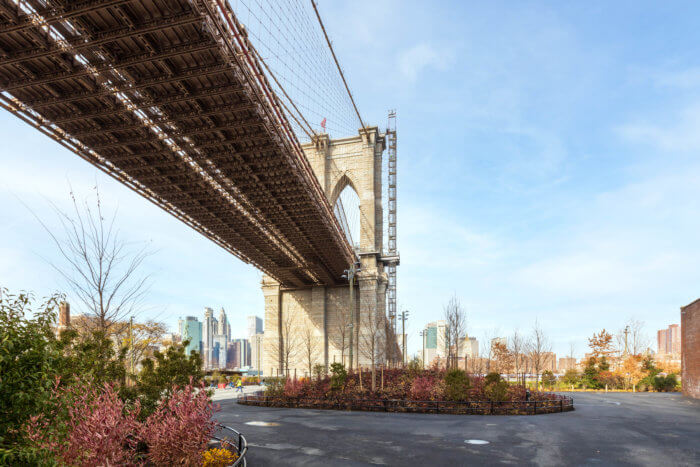
Mayor Bill de Blasio said the park’s completion was many years — and fights — in the making.
“Eighty-five acres for the people of New York City, that’s a beautiful, beautiful thing,” he said. “And you’d think something like more green space for kids and families would be a unifying reality. But some of us were around 15 years ago, 20 years ago, when in fact this was a controversy.”
“Now, I love my borough, and I love my city, but we do manage to come up with a controversy for every occasion,” the outgoing mayor joked. “Even when it comes to creating a park out of a swath of land that no one could go into and enjoy.”
At the groundbreaking last year, Landau announced the company’s decision to name the square after engineer Emily Warren Roebling, who spearheaded the construction of the Brooklyn Bridge after her husband, chief engineer Washington Roebling, fell ill and became bedridden.
Local preservationists advocated for years to memorialize Roebling, saying the project’s original name — Brooklyn Bridge Plaza — “[seemed] to demean and diminish the site’s significance.”
“Many know that she was the person who brought the Brooklyn Bridge home, right, she got it done,” Been said. “And of course it was a time when a woman stepping up in that way would have generated a great deal of skepticism, and a great deal of opposition. But despite all those odds, she got it done.”
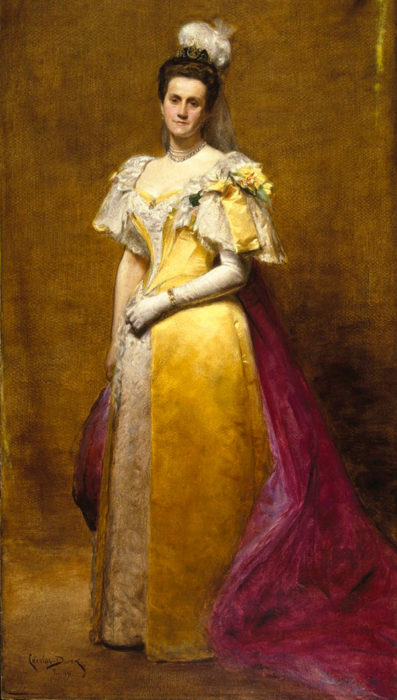
Roebling started out carrying information and orders between her husband and construction workers and engineers on-site, but her knowledge and attitude quickly made her a critical part of the successful completion of the iconic span.
An 1883 New York Times article noted that Roebling met with a group of steel and iron mill workers who had traveled to the city to consult with her husband on a confounding construction issue.
“Their surprise was great when Mrs. Roebling sat down with them, and by her knowledge of engineering helped them out with their patterns and cleared away difficulties that had for weeks been puzzling their brains,” the article reads.
When the bridge opened in 1883, Roebling was the first person to cross the 1.1 mile stretch in a carriage — carrying a rooster to symbolize victory.
While her contributions may have been well-known among the borough’s engineers and construction workers, her position was unofficial, and she did not receive widespread accolades until decades after her death.
“For Emily, this was a workplace, and it was not pleasant,” said Kristian Roebling, Emily’s great-great-grandson, who attended the ceremony with his two sons. “It was loud and nasty. But you can also say this was the launching pad for millions of women’s dreams to have a grander future than they could have ever imagined before that time.”


